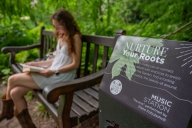You have /5 articles left.
Sign up for a free account or log in.
A new book, Developing & Sustaining a Research-Supportive Curriculum: A Compendium of Successful Practices, analyzes strategies to support the role of research within the undergraduate curriculum (not just solely within the sciences), and offers case studies detailing innovative research strategies that are gaining momentum as the interest in fostering undergraduate research continues to grow.
The book, released Wednesday by the Council on Undergraduate Research and available for $35 for members and $45 for non-members on the group's Web site, sheds light not only on college-by-college initiatives, but also bigger trends that are happening across higher education, including -- said Kerry R. Karukstis, a professor of chemistry at Harvey Mudd College who edited the volume along with a Hamilton College chemistry professor, Timothy E. Elgren -- inquiry-based labs in which students generate the questions, a focus on interdisciplinary approaches and an embrace of teamwork that truly challenges “the lonely scientist model.” Among the effective practices highlighted in the book’s executive summary, available free online:
- The creation of year-long learning communities in which students and faculty address one complex global problem. For example, a chapter in the book by four Massachusetts Institute of Technology faculty members highlights the university's Terrascope program, a relatively new, optional program for freshmen that entails a year-long emphasis on a single problem in two required courses, two optional courses and an optional spring break field trip. Students in the learning community address the problem comprehensively and collectively with an interdisciplinary lens (previous problems include determining the least environmentally harmful way to drill in the Arctic National Wildlife Refuge and completing a cost-benefit analysis of the proposition), and “Terrascopers,” as they’re called, have their own space on campus that's occupied, the authors write, "nearly 24 hours a day."
- The use of geographic information system technology as a tool to cultivate spatial thinking. More than 525 college and university programs are listed in ESRI's Searchable Database of GIS Programs, writes Ann B. Johnson, a higher education solutions manager at ESRI, a company that designs the technology.
- The use of local natural resources, such as a river watershed, field station, park or arboretum, as locations for teaching and research. The establishment of Cullowhee Creek Environmental Field Station in 1999, for instance, allowed for integrative and interdisciplinary opportunities at Western Carolina University, and was central to the reform of the geology and physics programs there, write Virginia L. Peterson, Mark L. Lord and Kurt Vandervoort, science faculty at Grand Valley State University, Western Carolina and California State Polytechnic University at Pomona, respectably. A focus on place more generally can also be useful, as Vincent F. A. Golphin and Danielle T. Smith, English and sociology faculty members at Rochester Institute of Technology, suggest in their section about an interdisciplinary course, “Livin’ for the City,’ in which students conduct research on urban issues such as drugs and poverty, collect literature about the urban experience and design research surveys.
- The use of institutional resources, such as writing centers, to facilitate research. By teaching, for instance, oral communication skills in writing courses, stressing analysis and providing training in logic, argument and persuasion, writing programs can "enhance the research culture and the research experience for undergraduates," writes Joyce Kinkead, a professor of English and associate vice president for research at Utah State University.
- The design of interdisciplinary laboratories designed to teach common investigative and laboratory methods in across the sciences, such as the “ID” first-year lab at Harvey Mudd that integrates chemistry, physics and biology.
The compendium highlights practices that address questions of teaching and learning, skill development and curricular reform from a faculty point of view, while concluding by analyzing various institutional contributions to undergraduate research. For example, at Hamilton College, Elgren writes that the institution made a commitment in 1998 to support summer faculty and student research in areas where funding is hard to come by, “read,” Elgren writes, “outside the sciences.” Recent initiatives include a studio art project on the oppression of women in Iraq and the United States, a government project examining the "axis of evil” and a philosophy project on forgery in the arts. "To date," Elgren writes, "we have received proposals from almost every department and program on our campus."








